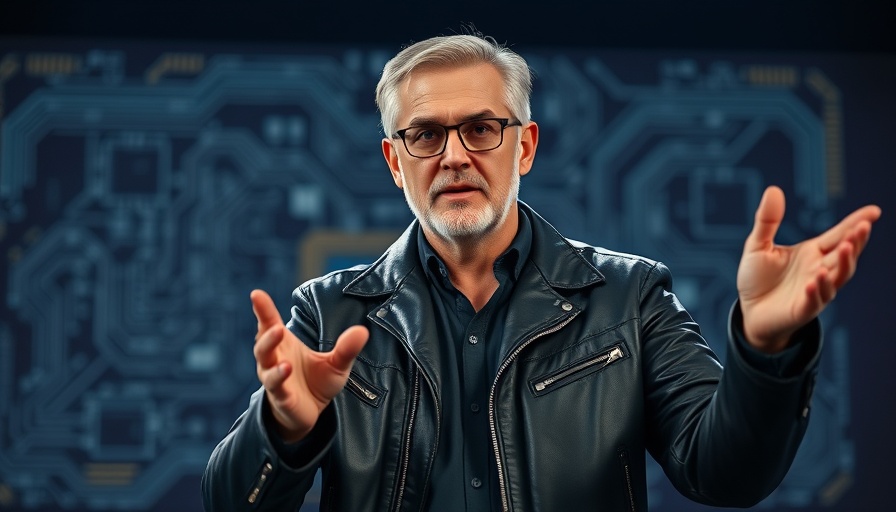
Why Jensen Huang's Role is More Complicated Than Ever
In the fast-evolving landscape of artificial intelligence (AI), Nvidia's CEO Jensen Huang has emerged as a pivotal figure, yet some are starting to question his impact on the company's revenue trajectory. As Huang delivered his keynote at the GTC event in San Jose, where more than 25,000 attendees gathered, he unveiled ambitious visions for AI. While the potential rewards are enticing, they also come with challenges, igniting debate over whether his innovations are both sustainable and financially sound.
The Challenge of Rapid Innovation
At the heart of Huang's recent comments is the tension between innovation and market adoption. His quip about being Nvidia’s “Chief Revenue Destruction Officer” provoked both laughter and concern, as he pointed out the implications of Nvidia's accelerated product rollout. Moving to a yearly technology cadence can indeed place heavy burdens on customers trying to keep pace with the latest advancements. As Huang observed, many buyers might feel frustrated purchasing a Hopper GPU only to face the immediate arrival of the superior Blackwell systems. This uncertainty can hinder investment in current offerings, reflecting a larger issue of how quickly the market can adapt to rapid innovations.
Market Dynamics: The Shift to Blackwell
Although Huang's playful jab might raise eyebrows, it signals a critical transition within Nvidia. The Blackwell chipset is reported to perform at speeds up to 40 times better than its predecessor, Hopper. However, the leap isn't merely technological; it brings with it a need for significant infrastructure upgrades, such as enhanced power capacity and sophisticated cooling systems—in essence, a hefty upfront investment for customers. Despite these challenges, the strong demand is illustrated by Nvidia's shipment figures, with nearly three times the number of Blackwell GPUs shipped compared to Hopper chips in 2024. This bodes well for Nvidia's future and indicates the start of a substantial demand cycle in the AI market.
The Bigger Picture: AI Demand and Future Trends
An important point raised by Huang during his keynote was the skyrocketing demand for computing power in AI, which he claimed requires 100 times more resources than just a year ago. This demand is largely fueled by innovations in reasoning and agentic AI, a field that leverages machines’ ability to autonomously handle tasks that previously required human intervention. As businesses continue to adopt these technologies, the need for powerful GPUs like those Nvidia is producing will only grow.
Future Insights: Is the Innovation Sustainable?
Looking forward, questions arise about whether this pace of innovation is sustainable. With the industry trending toward faster cycles, how will Nvidia maintain its market lead without alienating current buyers? As Huang emphasized, revealing product roadmaps is vital, not only for transparency but also in aligning the entire ecosystem—from developers to data centers—with the company's vision for the next two years. Failure to do so may lead to market disruption, where companies struggle to integrate quickly changing technologies, potentially curbing the very innovation Nvidia aims to promote.
Conclusion: Embracing Change in an Evolving Market
The dialogue around Huang's role underscores a broader industry shift. As Nvidia sits at the forefront of the AI revolution, the decisions made today will resonate for years to come, shaping how technologies impact society. Ai enthusiasts should stay alert as the AI landscape continues to evolve rapidly, putting us all at a crossroads of opportunity and uncertainty. In this environment, it’s essential to embrace change while remaining grounded in the technology that improves our lives.
Stay informed about the latest AI innovations! Subscribe to our newsletters for real-time insights and updates on what’s happening in the world of artificial intelligence.
 Add Row
Add Row  Add
Add 




 Add Row
Add Row  Add
Add 

Write A Comment